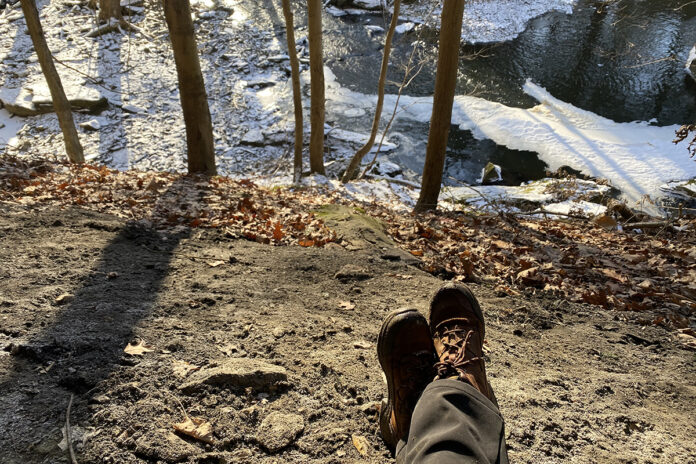
Hiking is one of my favorite activities. I try to get out at least once a week, especially, during spring when things change and evolve quickly. In recent weeks, I’ve hiked a little more to enjoy all of the spring wildflowers emerging and blooming on the floors of woodlots across northeast Ohio.
When I finish a hike, I always carefully check for ticks and other hitchhikers — I don’t just mean other insects.
Incidentally, hiking is also one of the easiest ways for invasive plant species to spread far and wide. Their seeds can easily attach to clothing, shoes and hair. If you’re not careful on the trail and when you’re packing up, you could carry the seeds of invasive species right into your county, neighborhood and backyard.
How to avoid spreading invasive plant species while hiking
Invasive species like growing in disturbed soil and grow easily along recreational trails. This makes it easy to spot invasive species while you’re hiking.
Learn to identify and report invasive plant species. If you like spending time outdoors, you know how important it is to conserve the natural ecosystems that already exist. Invasive species out-compete native plant species that wildlife relies on and add little value. That’s why it’s important to learn to identify invasive plant species and report them to whoever manages the land. When land managers know where invasive species are present they can more effectively monitor and control their spread. Being able to identify invasive species will also help you avoid spreading them.
Tip: If you’re new to identifying plants, try searching with your cell phone camera via Google. I do it all the time and it’s pretty accurate.
Stay on the trail. Staying on the trail limits the plant matter you come into contact with while you’re hiking, decreasing the number of seeds you can potentially pick up and spread. It keeps wildlife habitats from being disturbed off the trail and hikers from introducing invasive plants that may be lining the trail deeper into surrounding areas. There are many reasons to stay on the trail.
Always wear clean clothes and use shoe-cleaning stations. Arriving with clean gear and cleaning your shoes before you hike ensures you’re not transporting anything to the trail. Cleaning your shoes again after you hike ensures you’re not taking anything with you.
Shed your top layer after a hike. When I get back to my car after a hike, I always peel off my top layer and shake it out. Then I store those clothes in a plastic bag and take them home to be put directly in the washer. I got in this habit to avoid bringing ticks inside, but the same concept applies in the instance of invasive plant seeds.
Choose your clothes wisely. Seeds stick to some surfaces more easily than others. Socks, shoelaces, fleece and Velcro are all surfaces seeds stick to easily. Smoother materials like nylon are more resistant. Wear pants that are uncuffed and pocketless or only have pockets with zippers to avoid trapping seeds in crevices. Fastening gaiters over your boots can offer added protection to keep seeds, pebbles and mud out.
Don’t take souvenirs home. Don’t take anything home with you after a hike. Leaving things where they are ensures they will be there for the next hiker and ensures you’re not taking home anything you don’t want. Many invasive plant species have attractive flowers. Just remember they’re not attractive to the native ecosystems they could impact elsewhere.










